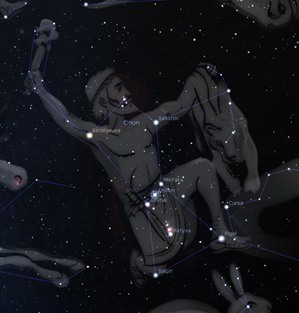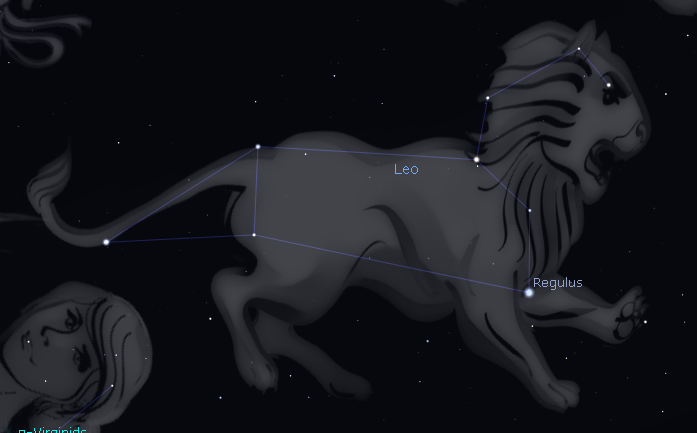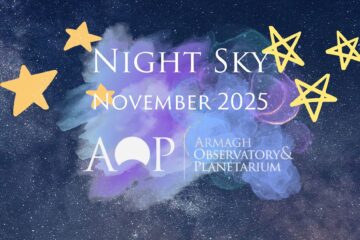Welcome to March! How did we get here, sure Christmas was only last week right? The start of March marks meteorological Spring, and the end of the month will mark astronomical Spring. The days are getting longer, and the nights are getting shorter. You would probably agree that we all have a spring in our step! (Yes, that was a terrible joke.)
 On March 20 and September 20, the terminator is a straight north-south line, and the Sun is said to sit directly above the equator. Credit: NASA
On March 20 and September 20, the terminator is a straight north-south line, and the Sun is said to sit directly above the equator. Credit: NASA
In terms of exciting things in the night sky such as meteor showers, or planets, there really isn’t much to see. But on 20th March we have the equinox (vernal equinox), and boy aren’t we glad to see it. On this day the Sun is exactly above the equator and day and night are of equal length. According to the astronomical definition of the seasons, the vernal equinox marks the beginning of spring, which lasts until the summer solstice.
March is a wonderful time when it comes to the constellations. We’re seeing the winter constellations slowly dip below the horizons, and the spring constellations become more dominant in the sky.

It will be your last chance to see Orion the Hunter this month. Try and spot the bright stars of Rigel and Betelgeuse while you can and marvel at their different colours. Remember red stars, like Betelgeuse are old and ‘cold’ and blue stars like Rigel and young and extremely hot.
Sirius the Dog star, the brightest star in the night sky, will also sink below the horizon this month. This star is in the constellation of Canis Major the Great Dog. It is only 9 light years away from the Earth and has a small companion star, making it a binary system. The main star we see is Sirius A, and Sirius B is much smaller and dimmer than its larger counterpart.

When it comes to spring constellations, our favourite is a well-known sign of the zodiac. Leo the Lion. In the night sky Leo is famous for its prominent asterism, known as The Sickle. We also think it looks like a backwards question mark. The brightest star in Leo marks the bottom of the Sickle asterism and is called Regulus. This star appears to be a single star in the sky, however like many stars, it is part of a multiple star system. This system is roughly 77 lightyears away from the Earth.
 Leo is the Nemean Lion, which was killed by Hercules on one of the 12 labours he had to perform for killing his family. According to Greek mythology, the lion that terrorized the citizens had a hide that could not punctured by iron, bronze or stone. Having broken all of his weapons fighting the man-eating lion, Hercules finally strangled it to death and placed it in the heavens as one of his conquests. Image Credit: Heather Alexander, Stellarium
Leo is the Nemean Lion, which was killed by Hercules on one of the 12 labours he had to perform for killing his family. According to Greek mythology, the lion that terrorized the citizens had a hide that could not punctured by iron, bronze or stone. Having broken all of his weapons fighting the man-eating lion, Hercules finally strangled it to death and placed it in the heavens as one of his conquests. Image Credit: Heather Alexander, Stellarium
Another sign of the zodiac to appear in the spring night sky is Virgo the Maiden. Virgo is the second largest constellation in the sky, with Hydra the Water Snake being the largest. The Sun travels along a path through the zodiac signs throughout the year, and it takes the Sun a whopping 44 days to travel through Virgo.
 Virgo is a brilliant constellation with 26 known exoplanets (planets outside of the solar system) orbiting around 20 stars. It also has at least a dozen Messier objects. It is the largest constellation of the Zodiac and the second-largest constellation overall, behind Hydra. Image Credit: Heather Alexander Stellarium
Virgo is a brilliant constellation with 26 known exoplanets (planets outside of the solar system) orbiting around 20 stars. It also has at least a dozen Messier objects. It is the largest constellation of the Zodiac and the second-largest constellation overall, behind Hydra. Image Credit: Heather Alexander Stellarium
The brightest star in Virgo is called Spica. Spica is believed to be the star that gave Hipparchus the data that led him to discover the precession of the equinoxes. Hipparchus of Nicaea was an ancient Greek astronomer, mathematician and geographer who is also considered the founder of trigonometry. We all have our flaws.
Remember, even though we are in Springtime now, you need to still wrap up warm when you’re going out star gazing. Bring you puffiest coat, a nice wooly hat and a scarf if you’re staying out late at night. Treat yourself and bring a hot flask of something with you too. If you’re in light polluted areas, even a short 5 minute drive can take you out to darker skies. You don’t always need a telescope or a pair of binoculars but they always help.


0 Comments